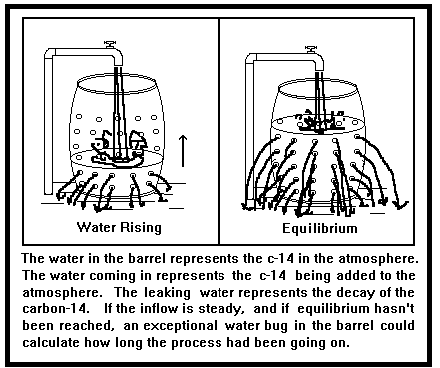- top 10 free dating sites 2012?
- News section;
- Carbon Dating Flaws – Doesn’t Carbon Dating Disprove the Bible?!
- dating scene in indianapolis?
- marriage not dating ost haruman?
But the changes in radiocarbon, and dating, fluctuate greatly up to 45, years, the limit of the study. Accessibility links Skip to article Skip to navigation. Thursday 17 January Carbon dating 'might be wrong by 10, years'. And as we mentioned earlier the dates on the geologic column were chosen out of the clear blue sky with no scientific basis. So their entire dating method for dating rocks and fossils is based off of circular reasoning. The atmosphere has very distinctive layers to it.
This radioactive carbon 14 is different from regular carbon. It is produced by radiation striking the atmosphere. In essence, sunlight strikes the atmosphere, slaps the nitrogen around, and turns it into carbon So it all starts by the sunlight striking the atmosphere.
About 21 pounds of carbon 14 is produced every year; and that is spread out all over the world.
How reliable is geologic dating?
If you look at a periodic table you will notice that Carbon and Nitrogen are right next to each other. Nitrogen has an atomic weight of 14 and Carbon has an atomic weight of If the sunlight slaps the nitrogen around, like talked about earlier, it will knock a few things off of it and it becomes Carbon It still weighs as much as nitrogen, but it is now considered carbon.
- Radiocarbon dating!
- 26 year old dating 16 year old?
- istanbul dating for expats?
It is called radioactive because it is unstable and will eventually break apart. On average half of it will break down every 5, years. While it is Carbon 14 it is floating around in the atmosphere and latches onto oxygen becoming carbon dioxide. During photosynthesis plants breathe in carbon dioxide and make it part of their tissue.

Animals eat plants and make it part of their bodies as well. This is how Carbon 14 gets into the living world.
It gets produced in the atmosphere from the sun, the plants breathe it in, and the animals eat the plants. We have all either eaten plants or eaten animals that have eaten plants.
Carbon dating 'might be wrong by 10,000 years'
The plants are breathing in this carbon dioxide and some of the carbon is radioactive. If the atmosphere contains. So, you probably have. When a plant or animal dies it stops taking in carbon 14 and whatever it had starts to decay. It was decaying while it was alive, but now there is nothing coming in to replace it.
You are here
So what they do is compare the amount of carbon 14 in the fossil to the amount of carbon 14 in the atmosphere. If the fossil only contains half as much carbon 14 as the atmosphere, it is assumed to have been dead for one half-life, or 5, years. While it was alive it should have had. If a fossil only has. In theory the amount of carbon 14 never goes to zero. However, for practical purposes we cannot measure passed a certain amount. There should be no measurable carbon 14 after about 40, — 50, years. Yet it has proven impossible to find any natural source of carbon below Pleistocene Ice Age strata that does not contain significant amounts of carbon 14, even though such strata are supposed to be millions or billions of years old.
His technique, known as carbon dating, revolutionized the field of archaeology. Now researchers could accurately calculate the age of any object made of organic materials by observing how much of a certain form of carbon remained, and then calculating backwards to determine when the plant or animal that the material came from had died. An isotope is a form of an element with a certain number of neutrons, which are the subatomic particles found in the nucleus of an atom that have no charge.
While the number of protons and electrons in an atom determine what element it is, the number of neutrons can vary widely between different atoms of the same element. Nearly 99 percent of all carbon on Earth is Carbon, meaning each atom has 12 neutrons in its nucleus.
Navigation menu
The shirt you're wearing, the carbon dioxide you inhale and the animals and plants you eat are all formed mostly of Carbon Carbon is a stable isotope, meaning its amount in any material remains the same year-after-year, century-after-century. Libby's groundbreaking radiocarbon dating technique instead looked at a much more rare isotope of carbon: Unlike Carbon, this isotope of carbon is unstable, and its atoms decay into an isotope of nitrogen over a period of thousands of years.
New Carbon is produced at a steady rate in Earth's upper atmosphere, however, as the Sun's rays strike nitrogen atoms. Radiocarbon dating exploits this contrast between a stable and unstable carbon isotope.
During its lifetime, a plant is constantly taking in carbon from the atmosphere through photosynthesis. Animals, in turn, consume this carbon when they eat plants, and the carbon spreads through the food cycle. This carbon comprises a steady ratio of Carbon and Carbon
